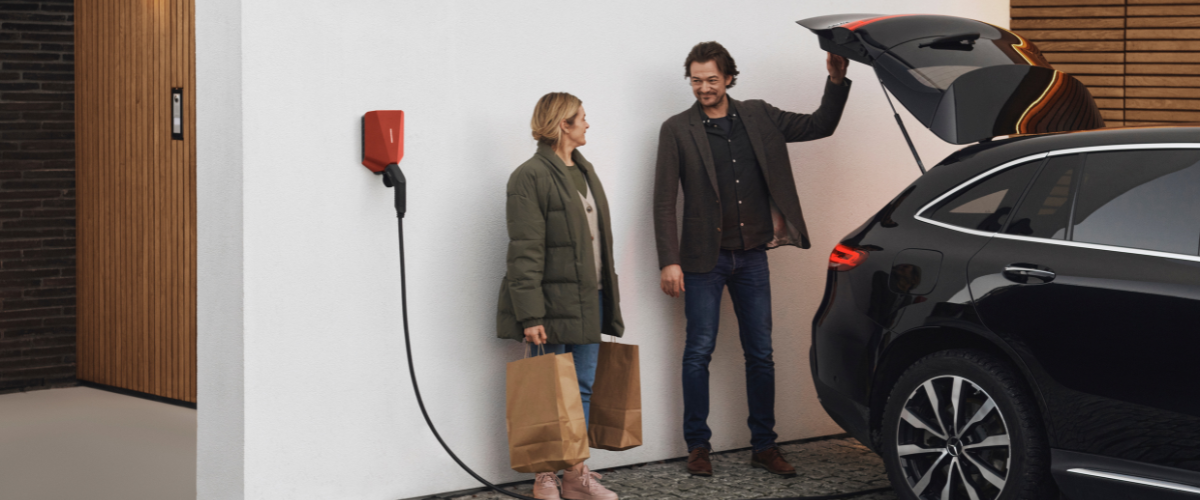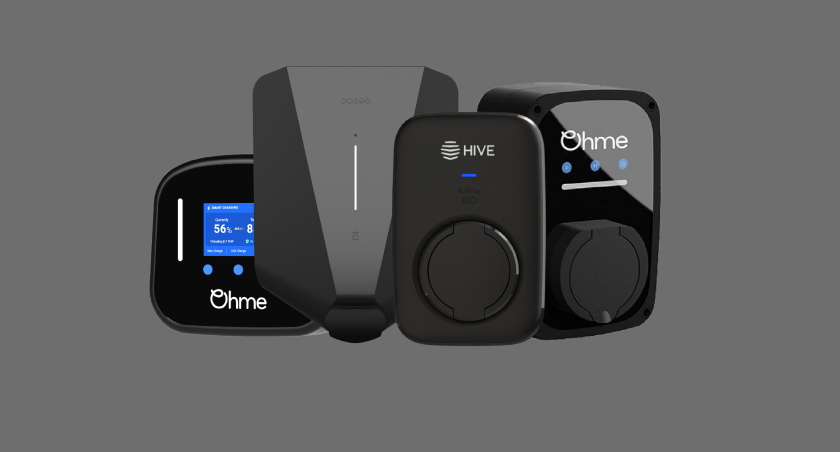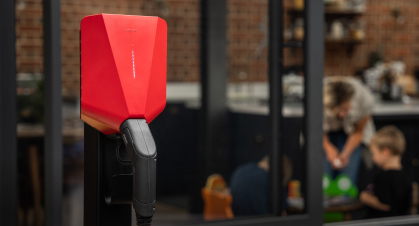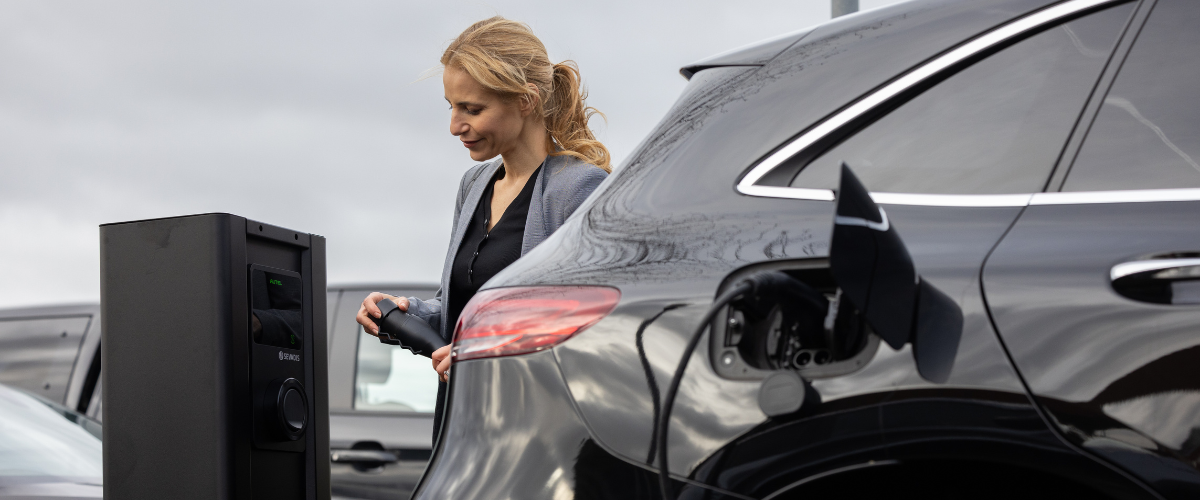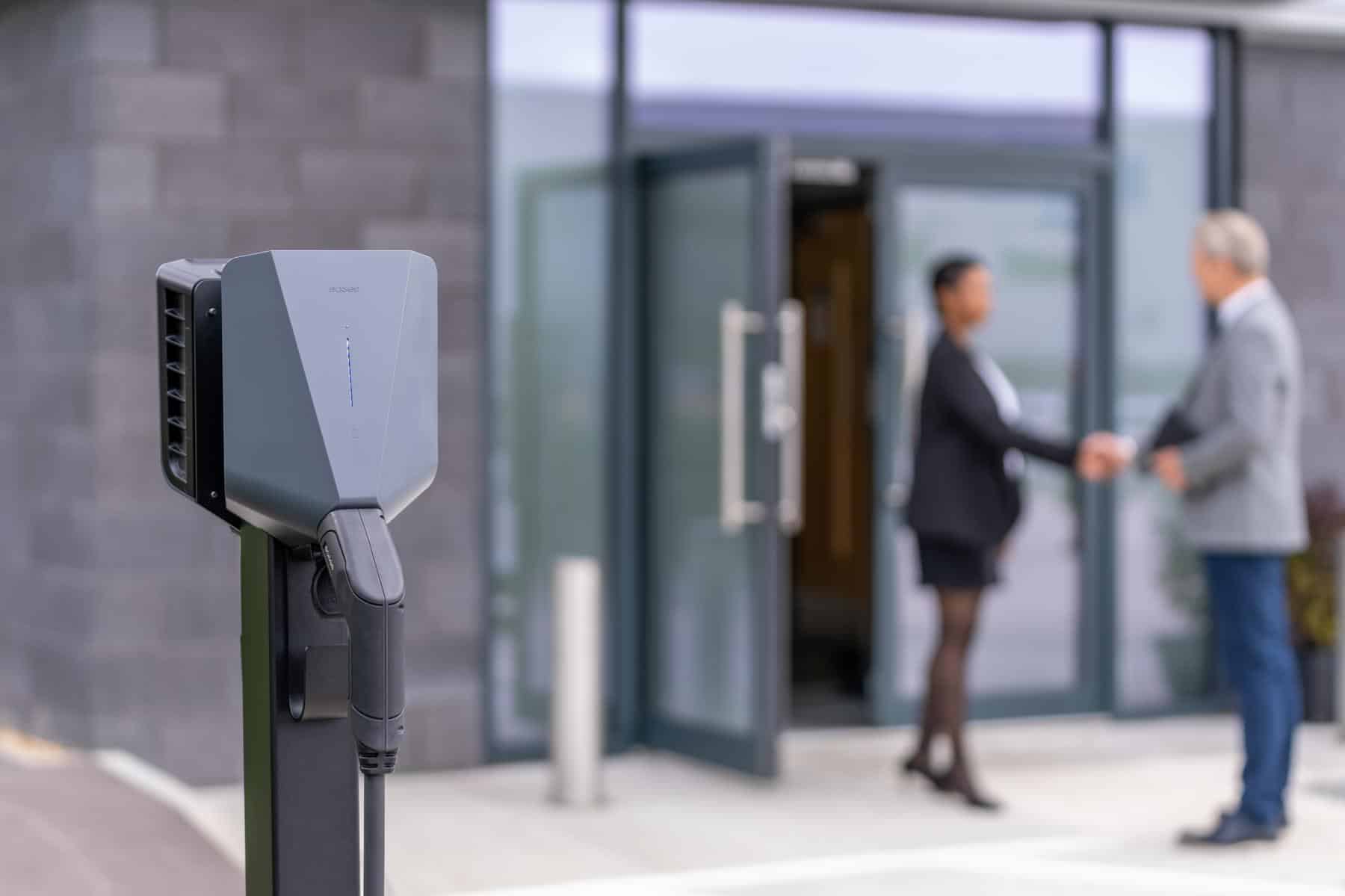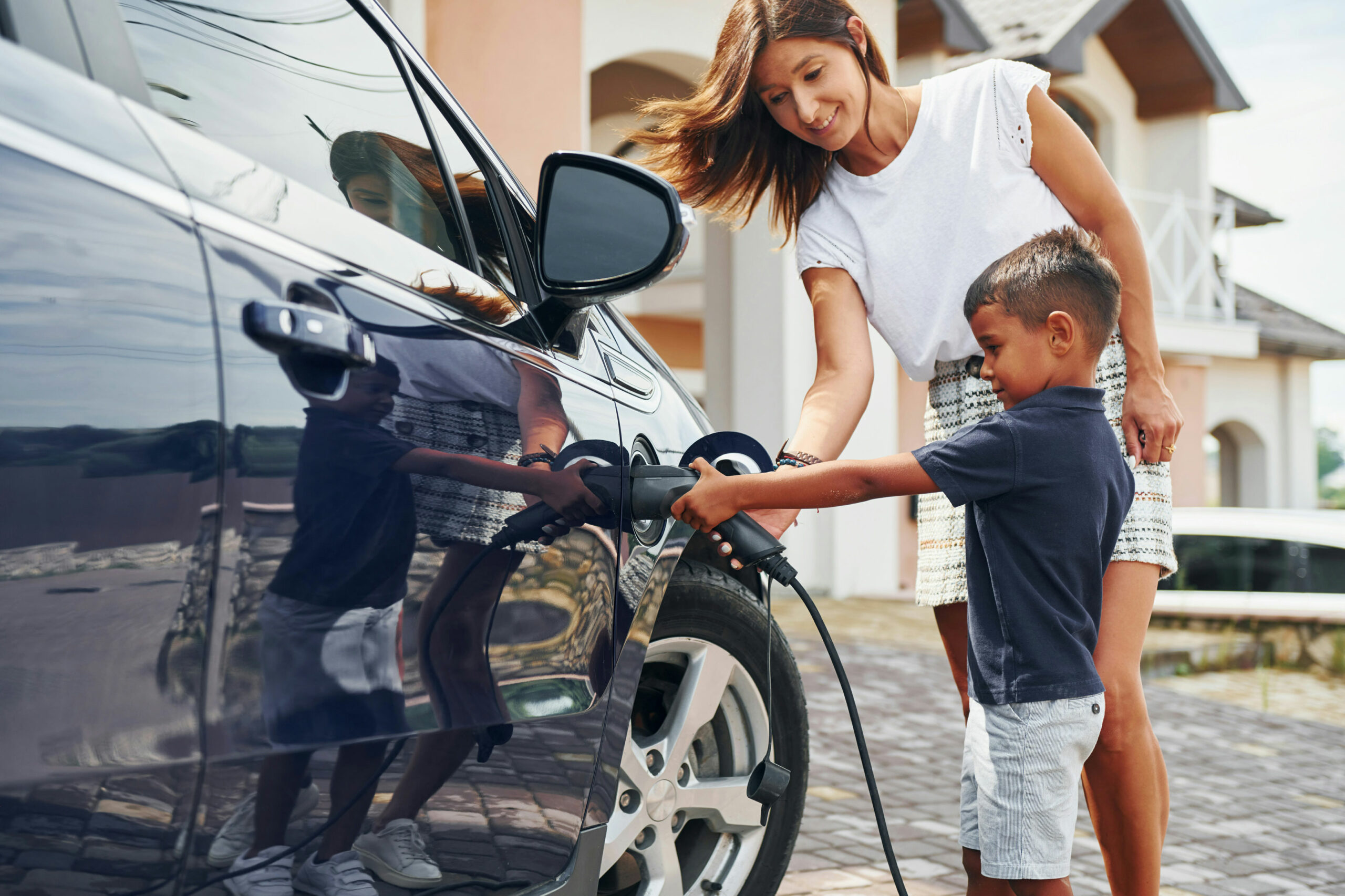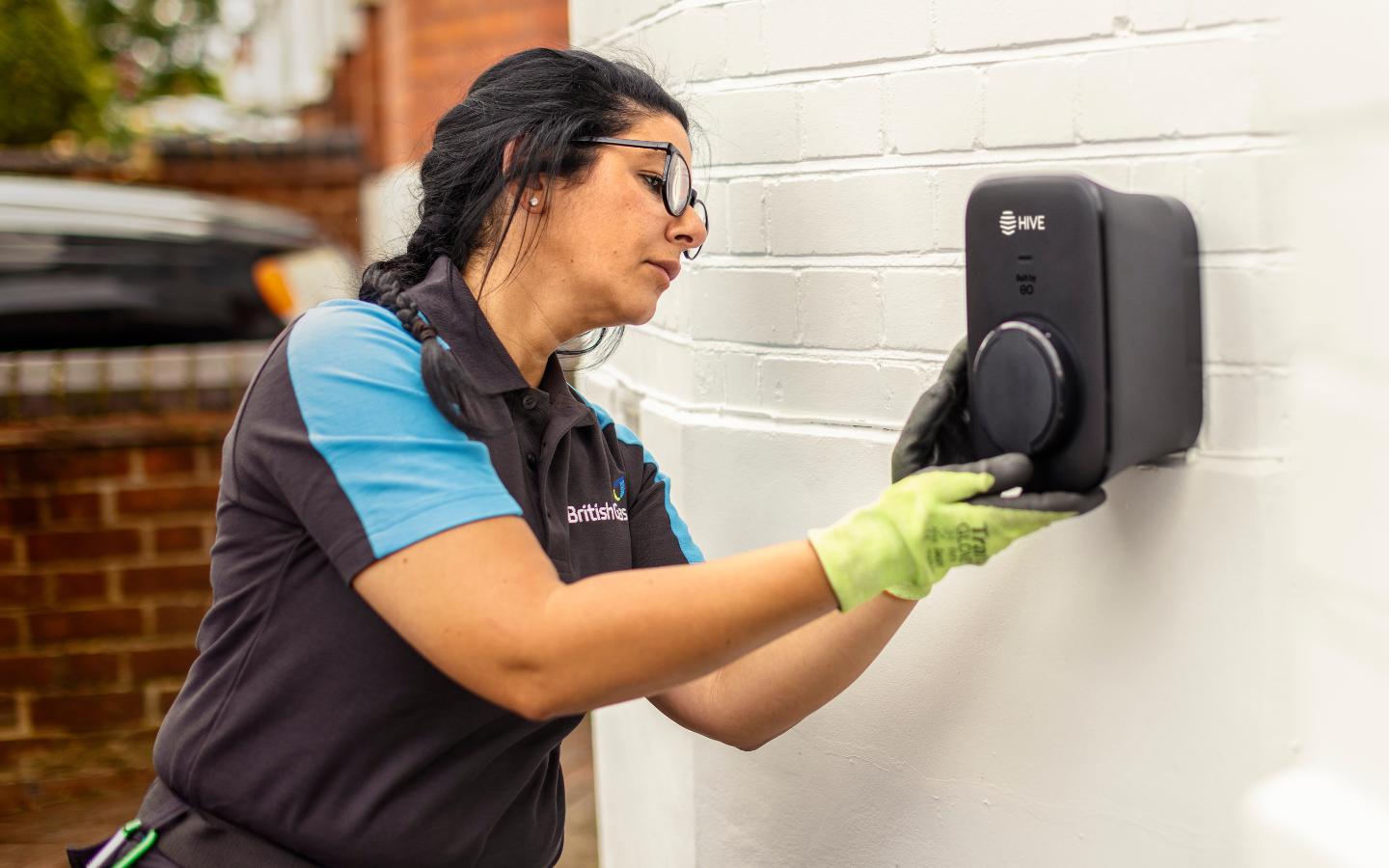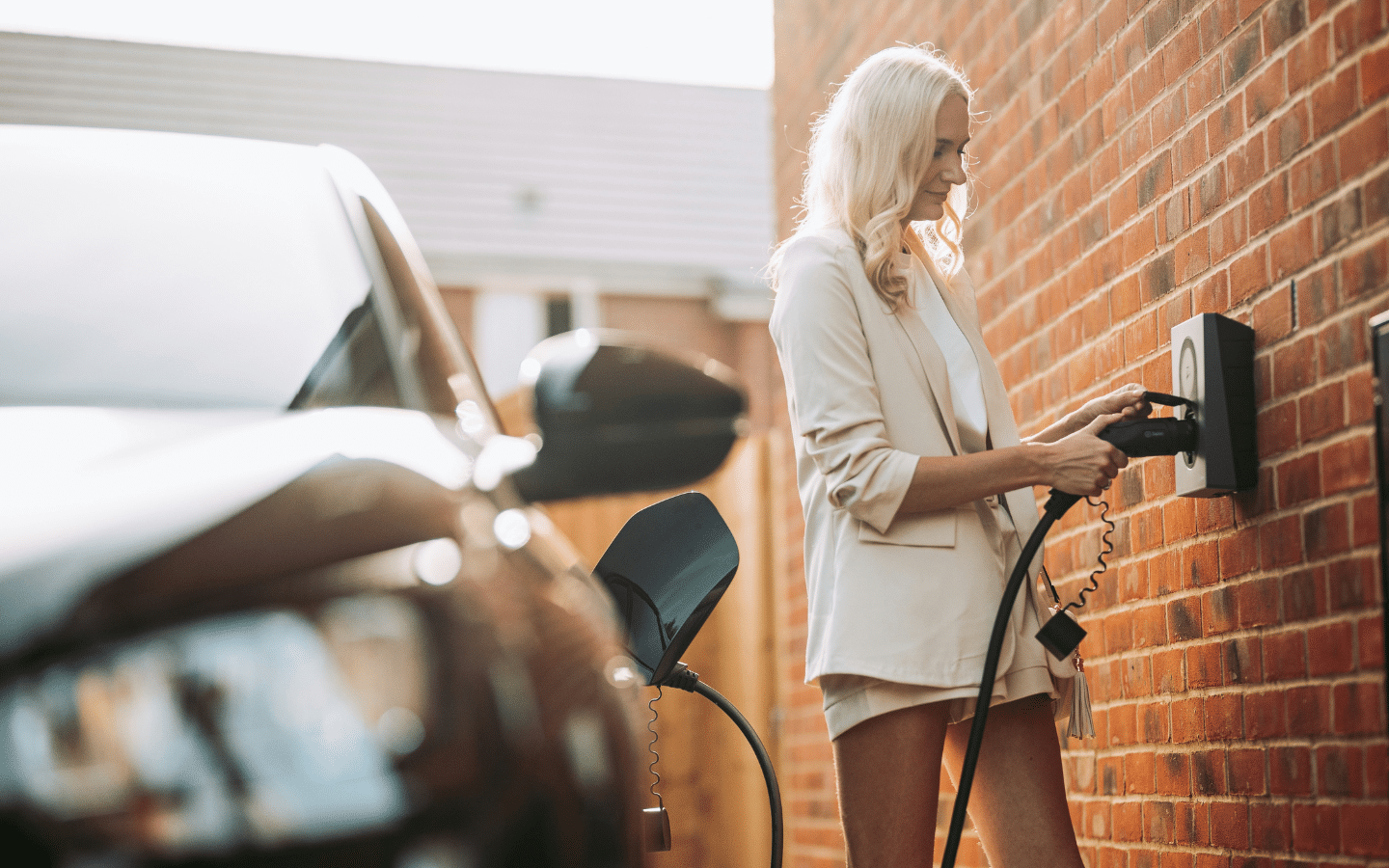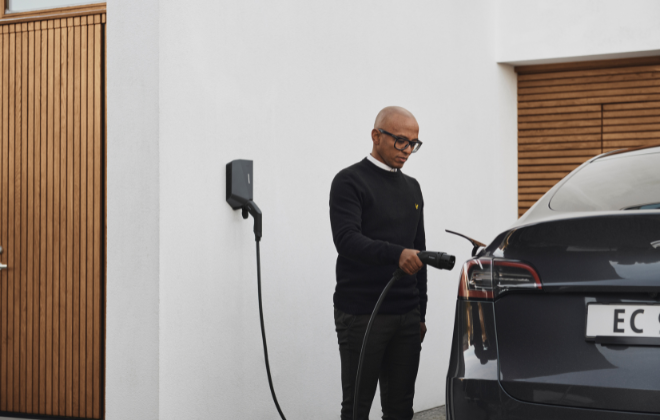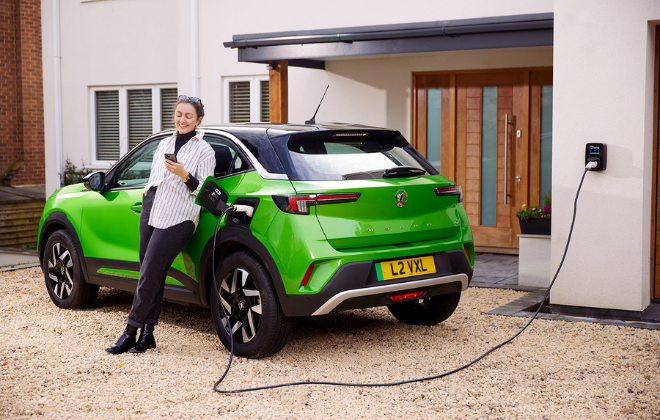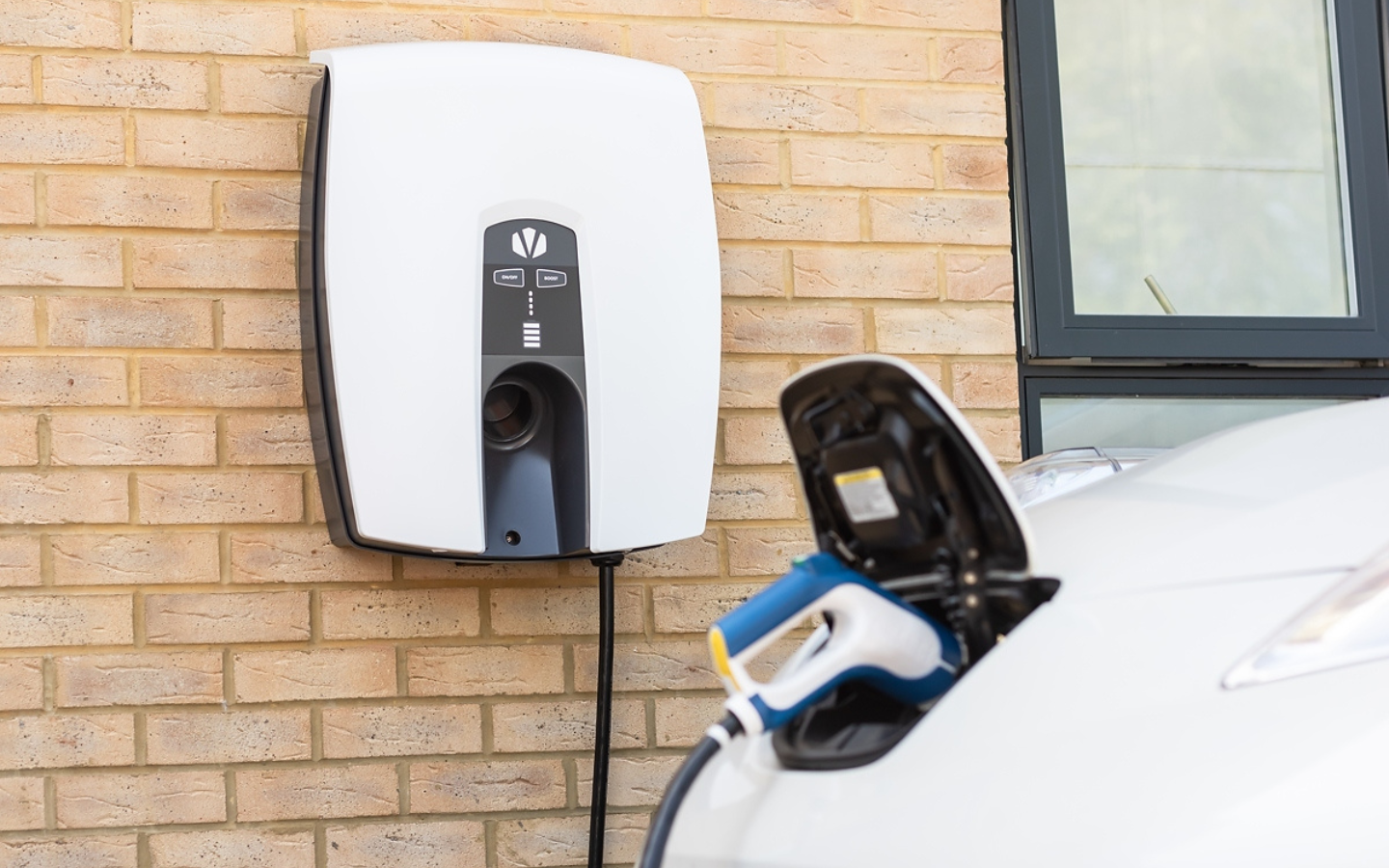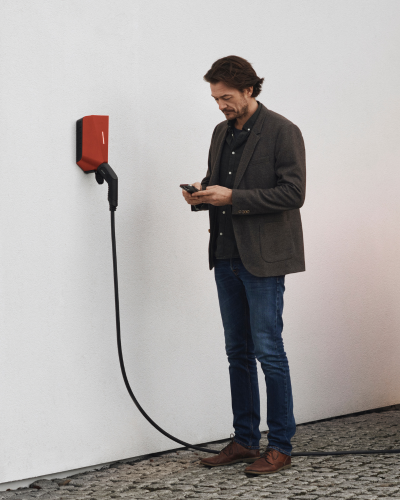
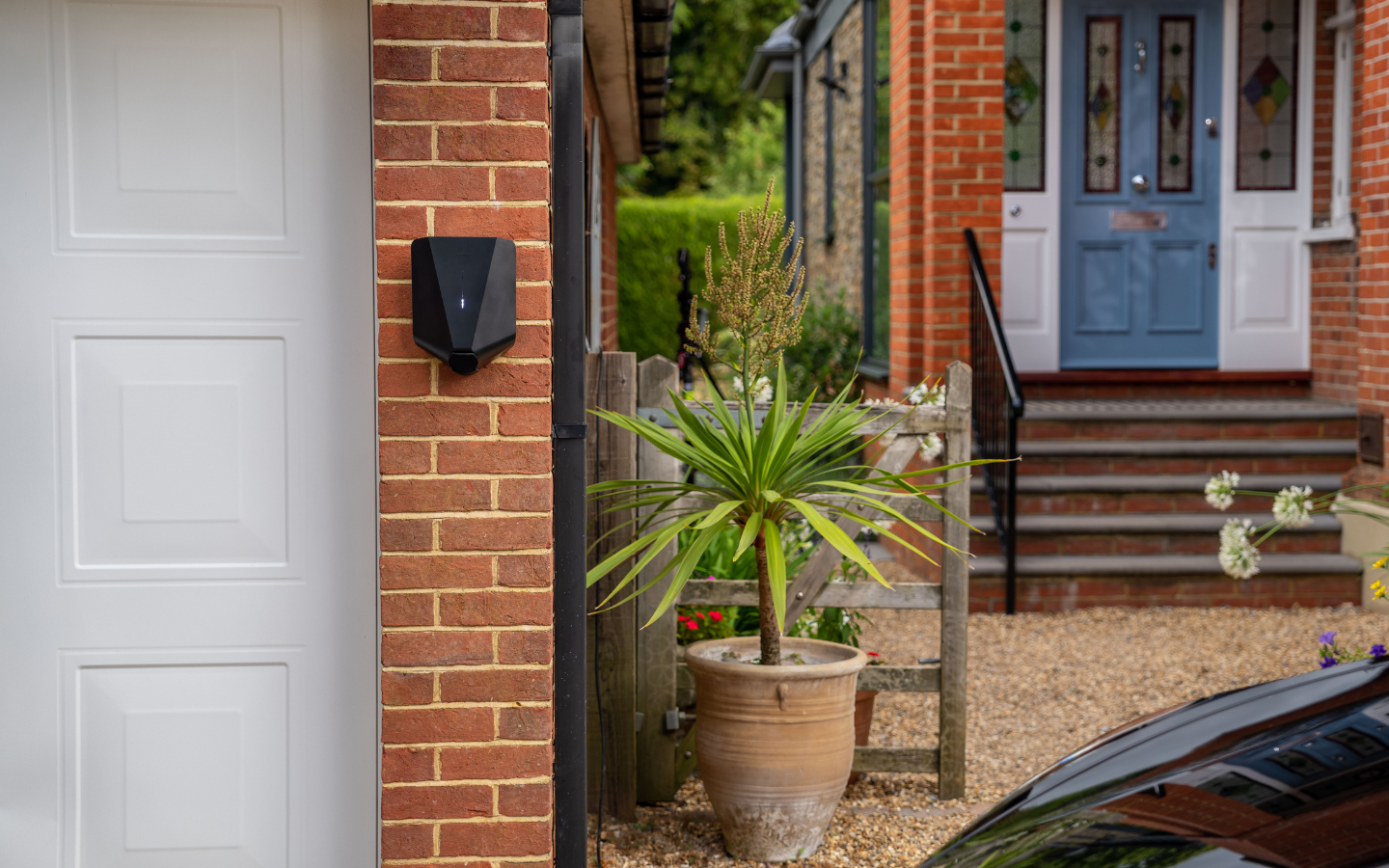
7 things to think about when investing in a home EV charger
Home EV chargers offer a multitude of benefits for EV drivers. Charge whenever you like from the comfort of your own home, charge three times faster than with a 3-pin plug, and save considerable amounts of money by taking advantage of smart features and charging during off-peak hours. And that’s just the start.
But if you’re here, you are likely asking – can I get an EV charger installed at home? In short, yes, you can get a 7kW electric car charger installed at home. In fact, a 7kW EV charger is the highest charging speed available for those with a single-phase electricity supply.
However, a home EV charger installation is more complex than you would think.
Before you go ahead with your home EV charger purchase, read through the seven things you need to think about when investing in a home EV charger, and what is needed for a home EV charger installation.
1) Is your electric car Type 1 or Type 2?
Your electric vehicle will have a connector – the part of your electric car where you plug your cable into charge. Currently, two types of EV connectors exist for 7kW EV charging – Type 1 and Type 2.
In the UK and Europe, a Type 2 connector is standard and therefore found to be more common in electric vehicles. Meanwhile, Type 1 electric vehicles are more typical in the Asian, American and Japanese markets. That being said, some EVs in the UK still have a Type 1 connector (typically older models, for example, the old Nissan Leaf 2012-2017).
Have a look at your EV’s connector and see which type your EV is; it’s essential when investing in a 7kW EV home charger that you match the connectors to be able to charge, i.e. a Type 2 EV needs a Type 2 electric vehicle charger.
To check whether you have a Type 1 or Type 2, please check your manufacturer’s guide, or have a look at your electric car’s connector. If the connector has a 7-pin design, it is likely to be a type 2, compared to if it has a 5-pin design, which would be a type 1 (see the image below).
Below is a list of electric vehicle models in the UK that utilise the type 1 socket:
| Citroen C-Zero (2016-2020) | Nissan Leaf Mk1 (2012 – 2017) |
| Ford Focus Electric | Peugeot iOn EV (2011-2018) |
| Ford C-MAX Energi (2013-2017) | Renault Fluence (Pre-2014) |
| Kia Soul EV (2017) | Toyota Prius Plug-In Hybrid (Pre-2017) |
| Mitsubishi I-MiEV | Vauxhall Ampera |
| Mitsubishi Outlander PHEV | Renault Kangoo Phase 1 |
| Nissan e-NV200 Combi |
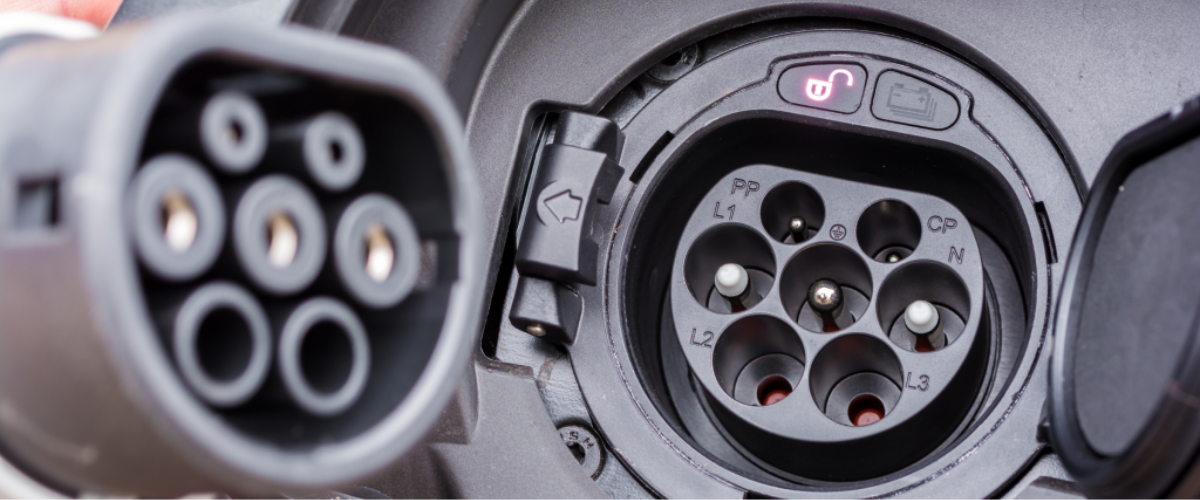
2) Do you want a tethered or an untethered (socketed) home EV charger?
EV chargers come in two forms: tethered and untethered (or sometimes referred to as socketed or non-tethered).
In short, the key difference between tethered and untethered EV chargers is that a tethered EV charger has the charging cable permanently attached to it, similar to a petrol pump. In comparison, an untethered EV charger’s charging cable can be removed from the unit and stored elsewhere.
There are pros and cons applicable to both types of EV chargers, with convenience being a key benefit of tethered EV chargers and flexibility for socketed chargers. But once you have your home EV charger installation, you can’t change your mind.
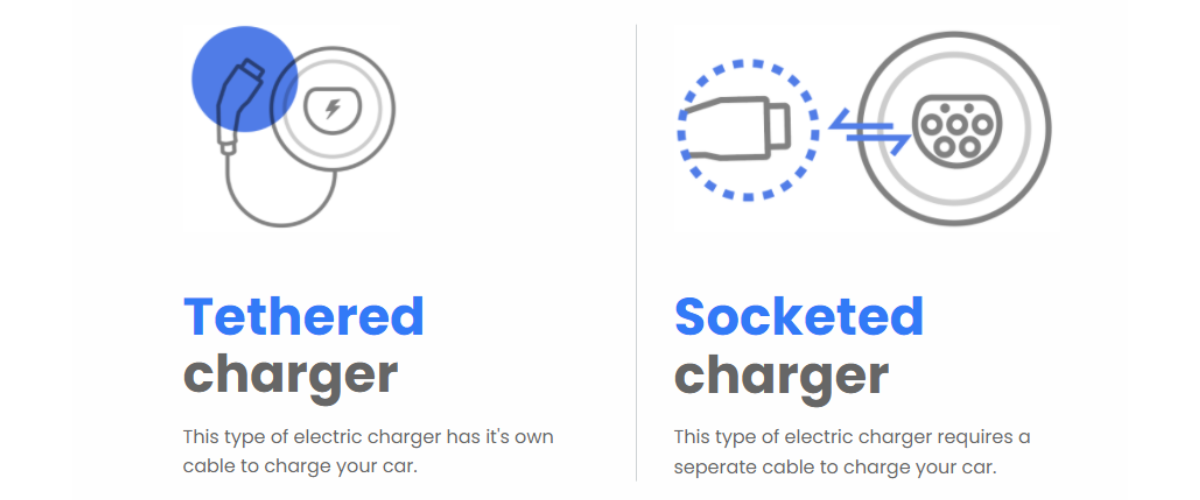
3) What aesthetic are you after for your home EV charger?
No longer are home EV chargers bulky and unattractive. In fact, home electric vehicle chargers come in many different sizes and styles.
So, you need to ask yourself – do you want a sleek EV charger that complements your home? Or do you want your charging point to be neat and discreet? If you’re financially savvy, your priority may be price – not looks.
Take a think about what sort of style, size or colour you are after before your home EV charger installation – is appearance is important to you? Or are functionality and features your priority? Or, perhaps, you want an electric car charger that has it all?
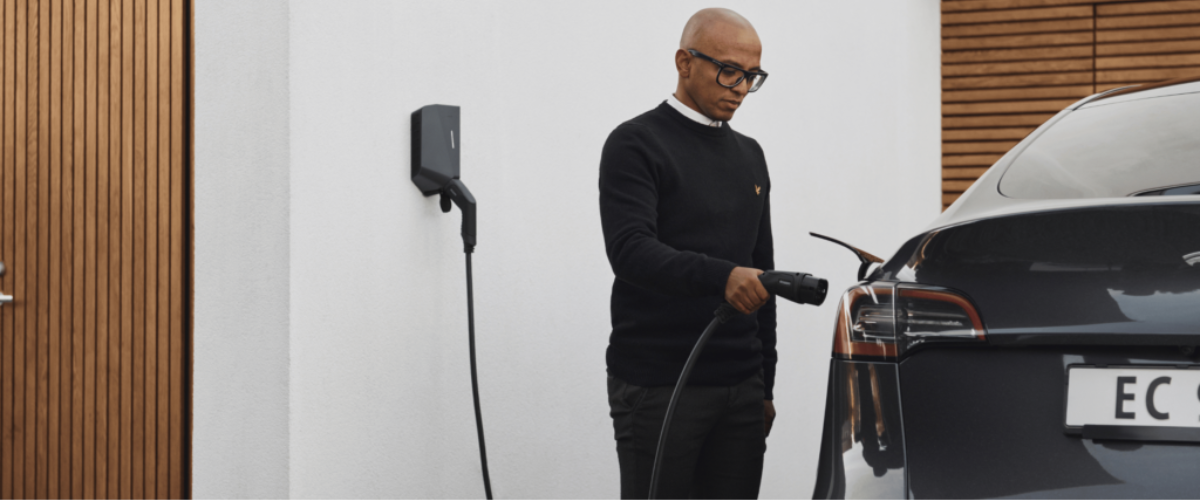
4) What home EV charger smart features are you interested in?
In accordance with the Smart Electric Vehicle Charger Regulations, all electric vehicle chargers must be smart.
And while all smart home chargers will be equipped with the charge scheduling feature, you need to think just how smart you want your EV charger.
For example, certain home EV chargers allow added cost benefits. The VCHRGD Seven Pro is solar compatible, meaning you can charge your electric vehicle with free solar energy, as long as you have a solar PV system. Alternatively, the Ohme Home Pro and Ohme ePod have the tariff integration feature, which connects to your energy tariff and allows you to charge at the cheapest rate available to you.
Of course, not all smart EV charger features are centred around costs. Some features add more security to your EV charger. For example, the Easee One allows you to lock your cable in place and protect your charger from unwanted use.
Got some specific features in mind? Give us a call and let us know your preferences – we will find you a charger that meets all your needs. With our wide range of 7kW home EV chargers, we will find your perfect EV charging match.
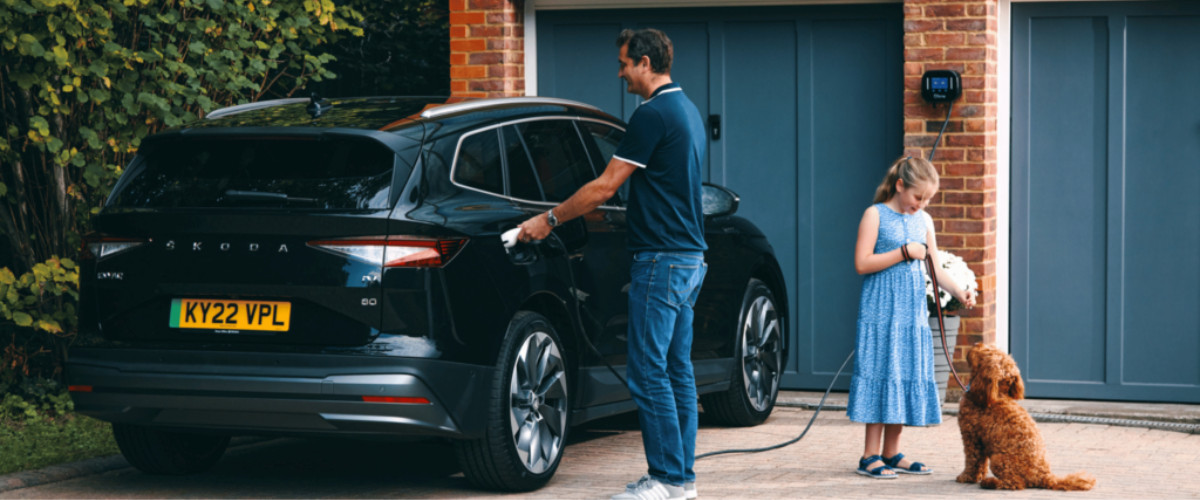
5) Price
As with any purchase, the price is always something to think about – and home electric car chargers are no different.
That being said, it’s important to note that electric vehicle chargers are an investment and will last many, many years before needing replacing (if ever). Unlike iPhone chargers which are cheap, cheerful, and easy to buy, home electric vehicle chargers are serious pieces of electrical equipment and need to adhere to regulations, in addition to being installed by experienced and OZEV qualified professionals – which, unfortunately, does not come cheap.
As a general rule of thumb on 7kW EV charger price, home EV chargers with more smart features or advanced smart features such as tariff integration are likely to be more expensive than those with bog-standard features.
In order to cater to everyone, we offer a wide range of the best EV chargers on the market, including the evec – the UK’s cheapest 7kW EV charger.
What’s more, you can spread the cost of your home electric vehicle charger with finance. Call 03333 44 96 99 for more information.
6) Location
Where would you like your home electric vehicle charger to be installed? The side of your house? In your detached garage? Have a think about where you would want your home charger, as well as the distance from your fuse box to its desired location and how much cabling, in metres, might be required (10 metres of cabling is included in our standard installation and covers the majority of installations).
Bear in mind that the location of the charger might influence your choice of the electric car charger, too – if it’s at the front of your house, you may want something sleeker or smaller, compared to if it is tucked away, unseen by prying eyes.
Wi-Fi connection is also important when choosing the location of your electric vehicle charger. So, try and gauge how strong your Wi-Fi connection is in different parts of your property. You must have a reliable Wi-Fi signal or a stable mobile connection where you want your EV home charger installed in order for the features to work correctly – so try and find the best spot for your electric vehicle charger.
Remember that if you don’t have off-street parking, you won’t be able to have a standard EV charger installed on your property. But worry not – we can have options available for those with on-street parking. The ChargeArm allows you to have a 7kW EV home charger installed on your property – something you otherwise wouldn’t be able to have.
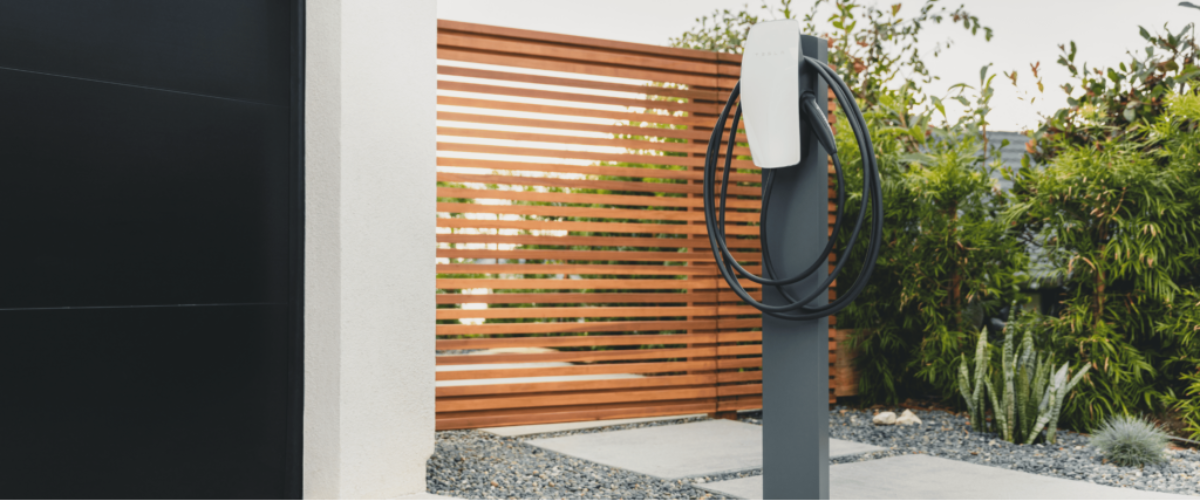
7) Electricity Supply
When thinking about investing in an electric vehicle charger, there are a few factors to think about and a couple of checks you could carry out to get a rough idea about your electricity supply. Have a peek at your main fuse (located in your meter box); how many amps is it rated at? Do you have a single-phase electricity supply or a three-phase? It’s essential for your home EV charger installation.
Single-phase electricity supply
A single-phase electricity supply is the most common type of electricity supply in the UK and is usually found in standard residential properties. With a single-phase power supply, you’ll only be able to install an electric vehicle charging point of up to 7kW (kilowatts), or more specifically, 7.4kW. 7.4kW is, therefore, the maximum rate your EV can be charged with on a single-phase electricity supply. With this in mind, if you want an 11kW or 22kW EV charger, you will need to contact the DNO for a fuse upgrade – which can be time-consuming.
Three-phase electricity supply
A three-phase electricity supply is typically found in industrial or commercial properties, and it’s rare to find in UK domestic homes. Suppose a house does have a three-phase supply. In that case, it’s likely to be a large property with multiple sizeable electrical appliances that need to draw a significant amount of electricity to function (i.e. hot tubs). Three-phase is faster than single-phase, but it is expensive and time-consuming to upgrade.
Please note – to benefit from 11kW or 22kW charging, not only does your electricity supply need to be three-phase, but your vehicle will have to have an onboard charger that can take that amount of kW. For example, a Nissan Leaf has a 6.6kW onboard charger, meaning even if you invested in an 11kW or 22kW charger, it would not charge any faster.
Potential issues with electricity supply you should be aware of:
With every electric vehicle charger order at We Power Your Car, we have to contact your DNO before booking your installation date as a legal requirement. DNO stands for Distribution Network Operator and, in simple terms, are the people in charge of your electricity supply.
It’s important to be aware of the issues that could arise in relation to your electricity supply. If this occurs, your DNO would have to intervene in your installation.
Looped supply – A looped supply is when your property’s electricity supply is connected or “looped” with your neighbours. A looped supply will need to be separated before you can have your charger installed.
Fuse upgrade – If you have a 60 amp fuse, or sometimes an 80 amp fuse, it will likely need to be upgraded. The upgrade is to ensure your main fuse can handle the electrical demand of a new EV charger (so the extra load from your EV charger doesn’t blow your fuse).
Another factor to consider is whether you want a 7kW, 11kW or 22kW charger; however, your ability to have an 11kW or 22kW charger depends on your electricity supply.
How do I identify whether I have a single-phase or three-phase electricity supply?
For a single-phase electricity supply, there will be a single fuse where the power enters your house/meter (one wire). On the other hand, three-phase can often be identified as having three 100amp fuses where the supply enters the building or the meter (three wires).
How do I know if I have a looped supply?
If you have a looped supply, you will see two cables entering the bottom of your meter box below the fuse (see below). If you have a looped supply, it means your electricity is directly connected to your neighbours.
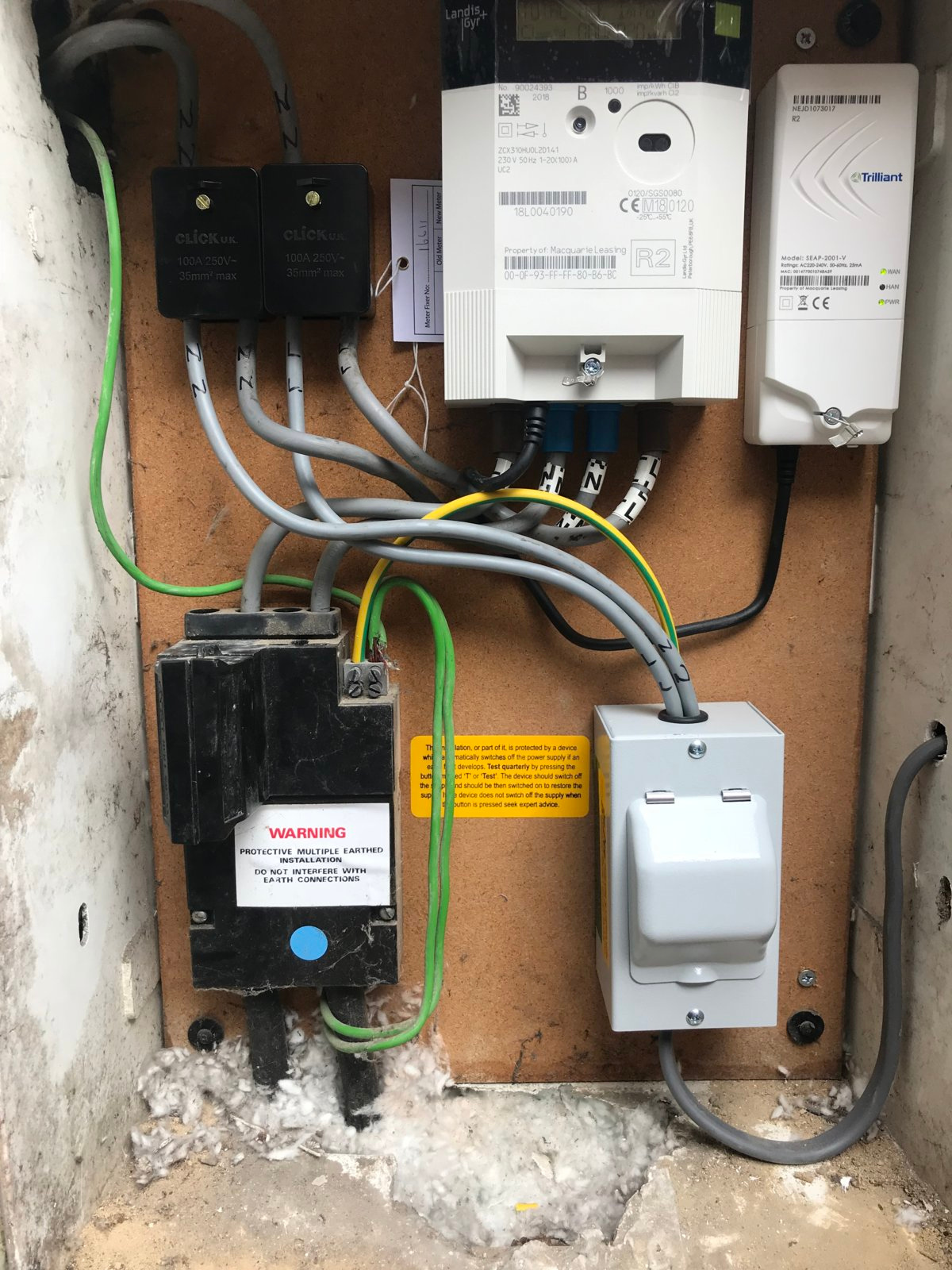
If you prefer to watch than read, check out our video on home EV charger installation.
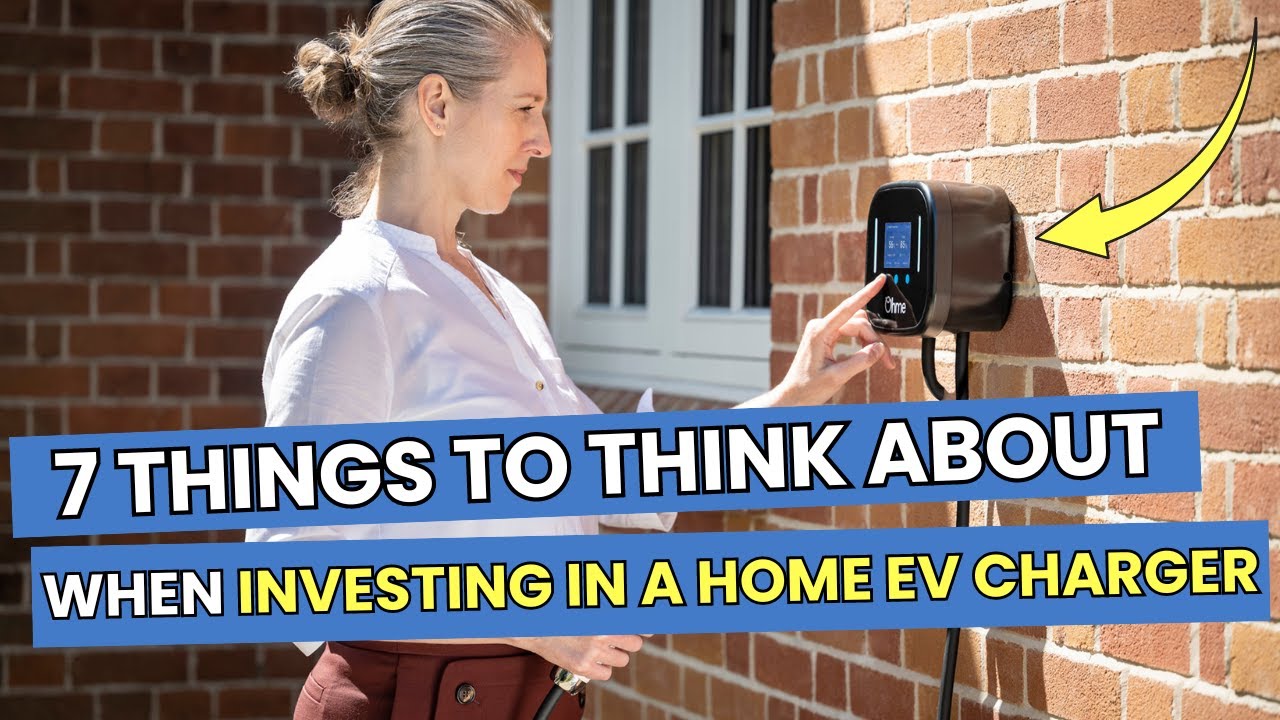
Interested in a home EV charger installation?
If you are looking to get an EV charger installed at your home, browse our line-up of the best electric car chargers, click below to get your free quote, or contact us for more information or any queries you may have.
With a wide portfolio of home electric vehicle chargers, we ensure we find your perfect EV charging match by offering free, unbiased advice. Plus, our accredited, DBS-checked and experienced EV charger installers are stationed across the UK, offering home EV installation wherever you are, all with first-class customer service.
Don’t believe us? Check out our Trustpilot. Spoiler: we’re rated ‘Excellent’.
For more information and our latest updates, follow us on Facebook, Instagram, Twitter, LinkedIn & YouTube.
Stay up to date on the latest from We Power Your Car_
I consent to receive newsletters from We Power Your Car. Please see our Privacy Policy
